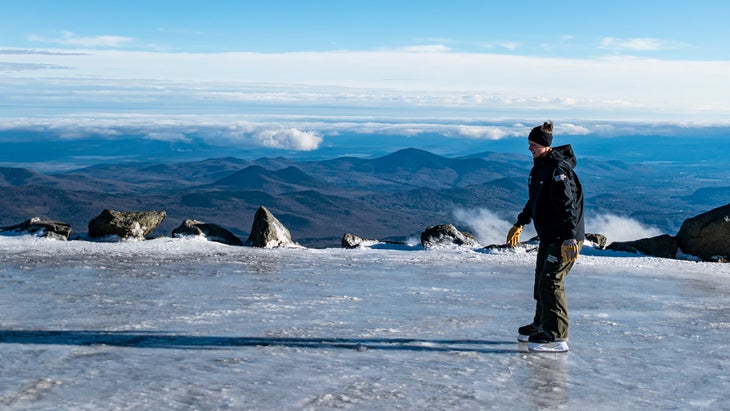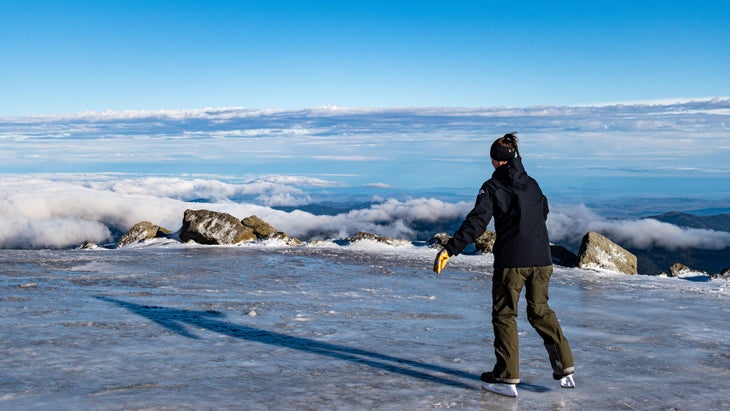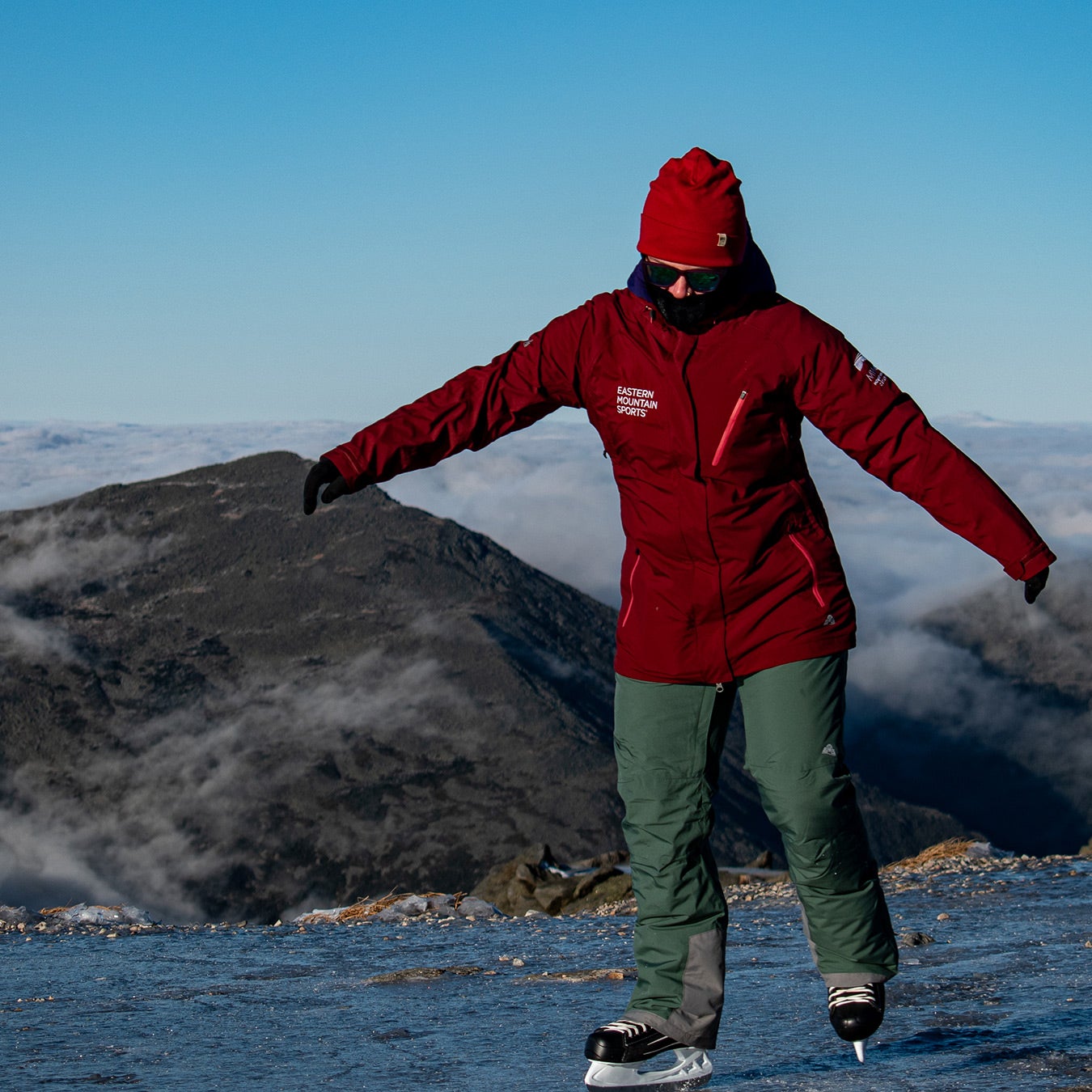Like many meteorologists, Alexandra Branton starts each workday by checking the weather. But unlike her professional peers, Branton sometimes risks her life doing so.
Branton, 23, lives and works at the Mount Washington Observatory, a cluster of buildings atop the 6,288-foot peak that endures some of the most extreme wind and cold on the earth’s surface. This past February the summit recorded the when a mass of arctic air sent the temperature tumbling to -108.4 degrees Fahrenheit.
On most fall and winter mornings, Branton layers herself in a thick jacket and wind pants, trudges onto the observatory’s roof, and then climbs a metal antennae structure. When she reaches the top, Branton uses a rubber hammer to bang ice sheets off of a cluster of meteorological instruments. This is her version of checking the weather.
“It sounds easy but try doing that when the wind is blowing 100 miles per hour,” Branton told me. “You get good at dodging falling ice.”
In her year and a half working on Mount Washington, Branton has seen plenty of bizarre weather phenomena: hurricane-force winds, massive snowfalls, and flooding, to name a few. But one day in mid-November still stands out in her memory as being particularly strange. When Branton stepped out of the observatory, the mountain’s summit was shrouded in a dense fog. As the mist lifted, she saw that everything—the rocks, the building, even the parking lot—was encrusted in a layer of smooth glaze ice.
Glaze ice is a hard and transparent film that often forms during freezing rainstorms or amid supercooled fog. As fast as glaze ice can form, it can also melt. Branton said perfect conditions aligned to form the ice. Warming temperatures had melted an early-season snowfall before the peak was inundated by chilly cloud cover and a light rain.
“Our weather windows are pretty small in the shoulder season, so as soon as I saw the ice I immediately went and grabbed an intern,” Branton said. “I told her ‘we need to go ice skating on the summit.’”


The two grabbed skates and headed for the parking lot, which was coated in a flat layer of ice. Mother Nature seemed to egg them on. The gusting winds momentarily slowed and the clouds below the summit parted, revealing a stunning panorama of New Hampshire’s White Mountains. The parking lot, which is often covered in snow by November, looked like a hockey rink. Branton and intern Amy Cotter laced up their skates and ventured onto the ice.
“The view made it so cool—it was an undercast day so we were up there skating above the clouds,” she said. “It just made me really happy.”
A coworker brought a camera and snapped images of the two skating—the photos would later be in nearby Manchester, New Hampshire.
The moment was both joyous and fleeting, and after a few minutes, the winds picked up, chasing everyone indoors. Branton’s professional duties also called. Like all employees at the observatory, she lives on the summit in eight-day increments, sleeping in a dormitory located below the observation deck. Workers clock 12-hour shifts. When Branton is not checking on instruments or mapping storms across New Hampshire, she delivers web presentations to school kids across the country.
It’s a pretty cool job for a recent college-grad. Because every now and then, the elements deliver an extreme situation that can be terrifying or even fun. When their shifts end, employees sometimes go sledding or skiing on a nearby slope. Some skate on a frozen pond a mile from the summit. Others simply walk around outside for entertainment. “It’s pretty easy to have fun when you can walk out the door and play in 100 mile-per-hour wind gusts,” Branton said.
The day after the impromptu skating session, a snowstorm dumped several inches of powder on the summit. By the end of the week, the ice rink was buried far below the blowing drifts. The skating season had come and gone in a single day. While the activity was the product of a momentary weather condition, Brant is confident that the phenomenon will occur again. “Maybe next year we can bring some hockey sticks,” she said.


